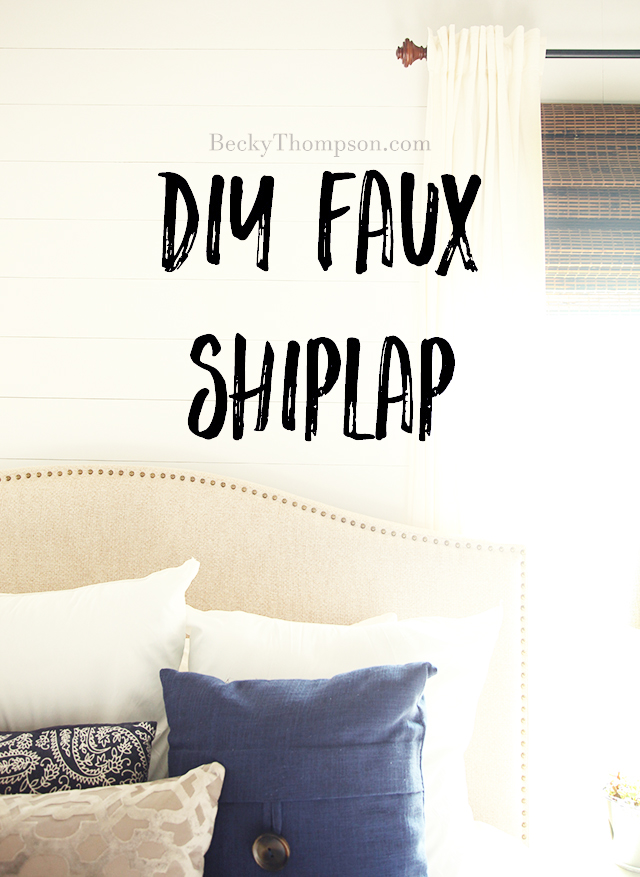
Before I start, I need you to know something. This wasn’t easy. All of those tutorials that call walls like these easy… those people are speaking from the finish line. The “let’s stand back and enjoy our hard work” position of the project.
My disclaimer is this: In the middle of this project (that I somehow coerced my husband into completing for me), we both wanted to give up. I was pretty convinced that we weren’t going to finish it. But we did, and it only took two days.
I asked my husband once we were finished if he thought it was an easy project, and he said, “Yeah. Absolutely.” And he was being serious. That was not his sentiment at 10:00 at night when we both just wanted it to be over.
I think this project is a little like childbirth. In the middle, there is this moment where you think, “There is no way I can do this. I just can’t. It’s not happening.” And just a few hours after the baby is born and wrapped in a clean blanket snuggled on your chest you think, “That wasn’t so bad.”
Perspective.
So with all of that said… here’s our “Easy” DIY Faux Shiplap wall.
BEFORE
I had already taken down the curtains, and the light was terrible because of the dark walls. That dark rectangle at the head of the bed is a mirror that we chose not to hang above our dresser. We bought this bed nearly two years ago and didn’t have a headboard until two days ago.
The first thing I did to prepare for this project was run to Lowe’s and have them cut 8′ x 4′ sheets of 1/4 in thick birch plywood into 6″ strips. (Full disclosure: I don’t really know what the plywood is called, but it cost about $25 a sheet.) Something to keep in mind when you are deciding how many square feet you will need for your project is the thickness of the saw blade. We lost 1/8 of an inch with every cut, so by the time we got to the last board, it was significantly less than 6 inches wide.
We went ahead and sanded the edges of the boards… and by “we” I mean “I.” The boards were splintered a little when they were cut at the store and even though this is not a perfect wall, the frayed wood wasn’t the look I wanted.
Now for installation info. After we prepped the wall by removing all of the curtains and wall brackets and screws and random nails, we nailed the first board to the top center. We used a stud finder to mark all of the studs first so we knew the boards would be secure.
Why did we start at the top? We knew we would need to cut the final board, and we didn’t want to risk an uneven cut where it would be visible – at the bottom behind the bed made more sense.
Do you need to remove the trim boards? Some tutorials suggest removing the trim boards at the top and bottom and reinstalling them once the faux shiplap boards are in place. We didn’t think it was necessary since our boards were the same thickness as the thinnest part of our trim. Even the bottom board looked great.
Something else I should note. We knew we were going to hang curtains and shades that hid our vertical seams. If your seams are going to be visible, you might consider staggering your boards. Think of how a wood floor is installed. It looks better if none of the seams line up.
So how did we get our spacing just right between our boards? We used a penny as a spacer. One tutorial I read recommended a nickel. We had more pennies than nickles. That made our decision for us.
These are our super low quality night photos. It was late and dark and we were just ready to be done.
The next step the next morning was filling all of the nail holes and vertical seams with wood filler. There is no reason to fill the horizontal seams since you went to all of that effort with the pennies to make the gaps. Ya know?
SO. I didn’t take a photo of it, but once the wood filler dried, I sanded it flat, and then I primed the wall with white KILZ and painted the wall with Valspar high-hide white flat paint.
It only took one coat of each. And I was busy painting the walls, so I didn’t take any pictures of myself painting the wall. But I used a four inch roller and a brush for all of the edges.
The biggest struggle during painting was keeping the paint from filling the seams. A toothpick is just the right size for this job. Just slide it down the seam to free the paint from the gaps.
AFTER
And you’ll have to click here to see the final result. (I hate when blogs do this too… but… master bedroom reveals deserve their own post!)









